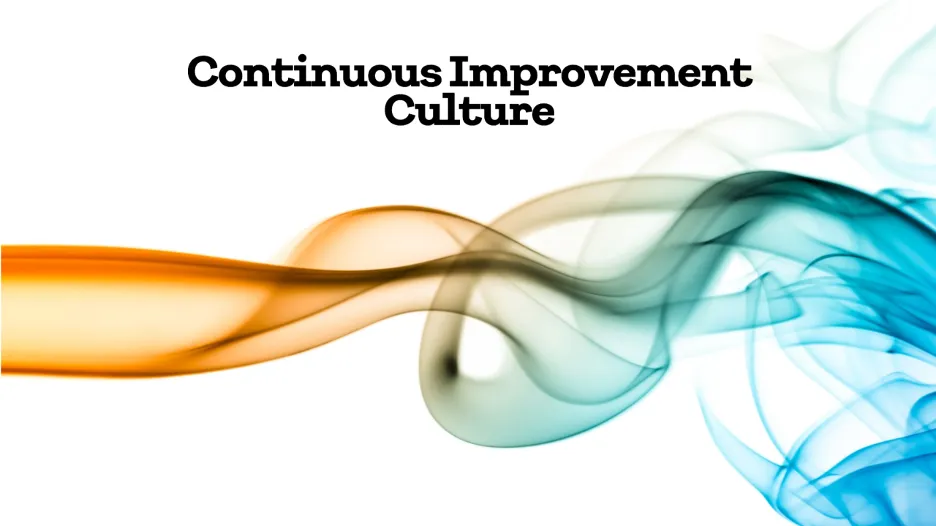
Continuous Improvement Culture: Proven Strategies for Success Across Industries (Part 2 of Our Series)
September 4, 2024
In our first article, we explored how continuous improvement is essential for achieving operational excellence. Now, let's dive deeper into the data and real-world examples that demonstrate the powerful impact of continuous improvement across various industries and organizational functions.
Continuous improvement isn't just a concept—it's a proven strategy that organizations worldwide use to achieve remarkable results. From enhancing operational efficiency to boosting employee engagement, reducing costs, and driving innovation, the benefits are clear. Here's a look at some compelling data and case studies that highlight just how effective continuous improvement can be.
1. Improving Operational Efficiency
Organizations that adopt continuous improvement methodologies, such as Lean and Six Sigma, see significant gains in productivity and efficiency. For example, Toyota's Lean production system has driven a 20% increase in productivity and a 30% reduction in inventory costs by minimizing waste and optimizing processes . Similarly, Motorola's application of Six Sigma principles has resulted in savings of $17 billion over 11 years by reducing defects and variations, leading to lower manufacturing errors and higher customer satisfaction .
2. Reducing Costs and Waste
Across industries, continuous improvement is leveraged to achieve substantial cost savings. General Electric (GE), for instance, saved approximately $12 billion in five years through Lean Six Sigma, which cut down on inefficiencies, reduced cycle times by 40%, and improved product quality with a 60% reduction in defects . In healthcare, the application of Lean methodologies has led to reductions in patient wait times by 20-40% and waste by up to 40%, significantly improving patient outcomes. Virginia Mason Medical Center, for example, reported a 74% reduction in patient wait times and a 50% cost savings improvement after adopting Lean practices(Timothy Holden_Resume2 …).
3. Boosting Employee Engagement and Satisfaction
Continuous improvement fosters a culture where employees feel empowered and engaged. Studies indicate that organizations with strong continuous improvement practices have 44% higher employee engagement scores, which is correlated with greater productivity and innovation . According to a Gallup study, companies with engaged employees are 21% more profitable than their less engaged counterparts . A report by McKinsey & Company further revealed that organizations practicing continuous improvement experienced a 12% increase in employee retention rates. Employees who feel they can make meaningful changes tend to have higher job satisfaction and are less likely to leave .
4. Enhancing Customer Satisfaction and Retention
A customer-centric approach to continuous improvement can significantly boost customer satisfaction and loyalty. Organizations that actively gather and act on customer feedback see higher retention rates. Amazon, for example, emphasizes rapid adaptation to customer needs and has achieved a customer satisfaction score of 88%, well above the retail industry average . Companies incorporating customer feedback into their continuous improvement processes often see increases of 10-20 points in their Net Promoter Scores (NPS), reflecting higher customer loyalty and satisfaction .
5. Accelerating Time-to-Market
Continuous improvement methodologies can help organizations bring new products to market faster. Companies that adopt Lean, Agile, or similar approaches have reduced time-to-market for new products by 25-50%. For instance, Procter & Gamble (P&G) utilized Lean and Agile principles to accelerate product development cycles, achieving a 35% reduction in time-to-market for new products . In software development, Agile methodologies, which emphasize continuous improvement, have enabled teams to deliver new features 30-40% faster, increase productivity by 20-30%, and reduce defects by up to 70% .
6. Increasing Financial Performance
Research consistently shows that companies focused on continuous improvement achieve higher profit margins and better returns on investment (ROI). According to the Harvard Business Review, companies that prioritize continuous improvement report profit margins that are, on average, 16% higher than those without such a focus . A survey of companies practicing Lean Six Sigma found that they experienced an average ROI of 20% on their continuous improvement initiatives, often within the first year of implementation .
7. Delivering Industry-Specific Results
Continuous improvement delivers results across all sectors. In manufacturing, 70% of companies reported significant improvements in key operational metrics such as cycle time, inventory levels, and cost per unit . Meanwhile, healthcare organizations have seen marked increases in patient satisfaction and reductions in operating costs through the adoption of Lean methodologies, with hospitals using Lean reporting an average 15% improvement in patient satisfaction scores and a 12% reduction in costs .
8. Real-World Success Stories
Companies like Intel and Nestlé have demonstrated the tangible benefits of continuous improvement. Intel used Lean and Six Sigma techniques to achieve a 75% reduction in product defects and a 30% increase in productivity across its manufacturing sites . Nestlé’s continuous improvement initiatives led to a 20% reduction in energy usage and a 10% reduction in water consumption across its global operations, supporting its sustainability goals .
9. Driving Innovation
Organizations that foster a culture of continuous improvement report a 30% increase in innovation outcomes. A survey by PwC found that continuous improvement encourages a mindset of experimentation and adaptation, which are essential components of innovation .
10. Building Resilience
The COVID-19 pandemic underscored the importance of continuous improvement in building organizational resilience. According to a McKinsey study, organizations with robust continuous improvement cultures were 2.5 times more likely to adapt quickly to the new operating environment. These organizations maintained productivity and met changing customer demands more effectively .
These examples and data points demonstrate the broad impact of continuous improvement across industries and functions. By adopting these practices, organizations can achieve significant gains in efficiency, cost savings, employee engagement, customer satisfaction, innovation, and overall financial performance.
Stay tuned for Part 3 of our series, where I'll share the impact that continuous improvement has on Sales Growth!
#ContinuousImprovement #OperationalExcellence #Leadership #BusinessGrowth #Innovation #EmployeeEngagement #CustomerSatisfaction #Agility #BusinessStrategy
Research Citations:
Toyota Lean Production System, Toyota Motor Corporation Reports.
Motorola Six Sigma Results, Motorola Solutions Case Studies.
GE Lean Six Sigma Savings, General Electric Financial Reports.
Virginia Mason Medical Center Lean Initiatives, "Healthcare Management Review," 2019.
Continuous Improvement and Employee Engagement, Gallup Workplace Research.
Gallup Study on Employee Engagement and Profitability, Gallup Reports.
McKinsey & Company Report on Employee Retention, McKinsey & Company Insights.
Amazon Customer Satisfaction Metrics, American Customer Satisfaction Index (ACSI) Reports.
Net Promoter Score Improvement Data, Bain & Company Research.
Procter & Gamble Lean and Agile Practices, P&G Corporate Strategy Reports.
Agile Software Development Impact, "Journal of Agile Development," 2021.
Harvard Business Review on Profit Margins, Harvard Business Review, 2020.
Lean Six Sigma ROI Study, Lean Enterprise Institute Reports.
IndustryWeek Lean Implementation Survey, IndustryWeek Manufacturing Reports.
Journal of Healthcare Management Study on Lean Methods, "Journal of Healthcare Management," 2018.
Intel Lean and Six Sigma Results, Intel Corporation Case Studies.
Nestlé Sustainability and Improvement Initiatives, Nestlé Corporate Social Responsibility Reports.
PwC Survey on Innovation and Continuous Improvement, PwC Innovation Insights.
McKinsey Study on Organizational Resilience, McKinsey & Company Reports.
